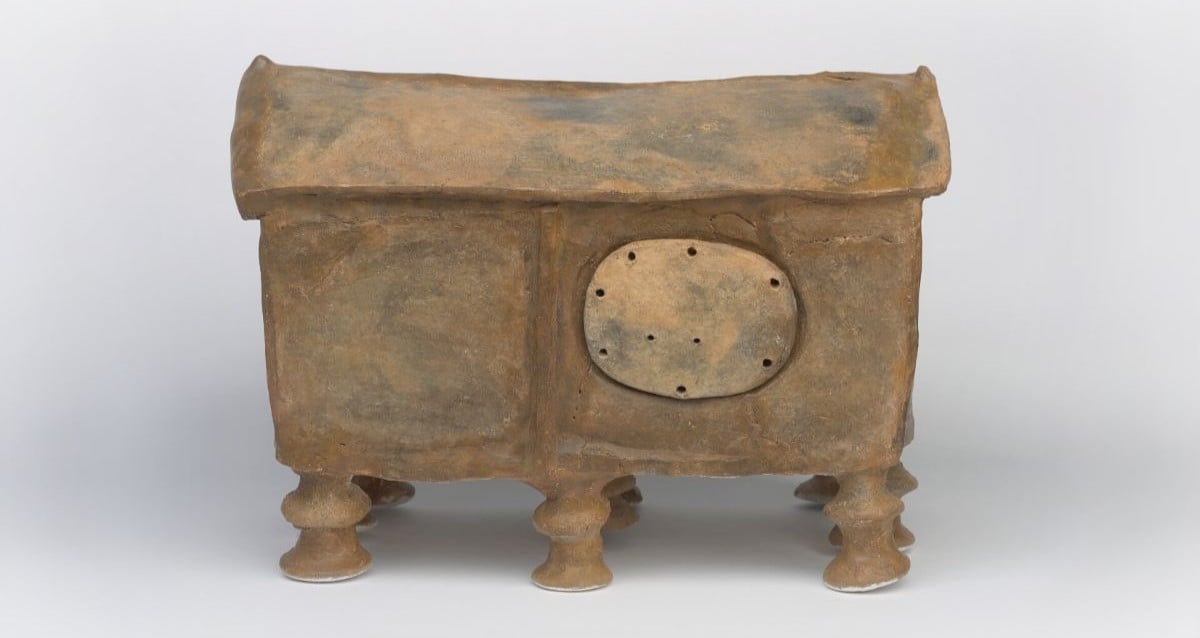Unearthed Secrets: Isaac Newton’s Mother’s 17th-Century Home Discovered Near Legendary Apple Tree Site
Ever wonder what Isaac Newton’s mom was up to while her genius kid was busy inventing gravity by watching apples drop? Turns out, archaeologists digging near the legendary Woolsthorpe Manor have uncovered more than just dirt—they’ve stumbled upon remnants of Hannah Ayscough’s very own house, complete with artifacts like tableware and thimbles that possibly belonged to her. It’s wild to think that the everyday stuff she used could give us a peek into the humble domestic life behind one of history’s greatest minds. Who knew a pile of old pottery and buttons could connect us so vividly to Newton’s world? If only those thimbles could talk—maybe they’d spill the tea on what really went down in the Newton household. Dive into this fascinating discovery that grounds the legend in real life and shows us the cozy, cluttered corners behind monumental scientific breakthroughs. LEARN MORE
Archaeologists found a number of artifacts at the site, including tableware and thimbles, that may have been used by Isaac Newton’s mother, Hannah Ayscough.

National TrustArchaeologists at work during the excavation, which confirmed the location of Isaac Newton’s mother’s house.
More than 300 years ago, Isaac Newton purportedly came up with his theory of gravity after watching an apple fall from a tree at his family’s estate at Woolsthorpe Manor in Lincolnshire, England. Now, near where that tree once stood, archaeologists have found exciting remains of Newton’s mother’s house, which they’ve long suspected was located in a field nearby.
The items found at Hannah Ayscough’s home include a number of household goods and offer a fascinating and tangible connection to Isaac Newton and the formative time he spent at Woolsthorpe Manor.
Discovering Hannah Ayscough’s House
According to a press release from the National Trust, archaeologists with the National Trust and York Archaeology set out to find the exact location of Isaac Newton’s mother’s house this summer. After acquiring the land five years ago, the National Trust suspected that they would be able to find the house near where Newton’s apple tree once stood — it’s since been replaced — because of a 1797 sketch by J. C. Barrow.

National TrustThis 1797 sketch by J. C. Barrow shows Isaac Newton’s mother’s house close to Woolsthorpe Manor, along with a grove of trees.
Sure enough, excavations at the site turned up rubble from the house’s demolition as well as a number of objects that may have been used by Newton’s mother, Hannah Ayscough, centuries ago. These artifacts included tableware and pottery, a fragment of a 17th-century jug depicting the face of a bearded man, a 17th-century “jetton” used as a gaming token, thimbles, part of a needle, buttons, and animal bones from butchering and preparing meat.
“The discoveries are such relatable objects and a real window into the domestic life of the Newton family,” National Trust archaeologist Rosalind Buck remarked in the press release. “We can really imagine Hannah and the family eating from items like the Staffordshire slipware, or using jugs like the one with that magnificent, embossed face. Were people potentially gaming with jetton pieces while domestic tasks such as sewing and repairing clothes were being done nearby?”

National TrustSome of the objects found at Woolsthorpe Manor during the excavation of Isaac Newton’s mother’s house.
Indeed, the objects found at Woolsthorpe Manor offer a curious look back at Isaac Newton, his family life, and the place where he made some of his most astounding scientific discoveries.
How Woolsthorpe Manor Shaped Isaac Newton
Both Isaac Newton and Hannah Ayscough had an important relationship with Woolsthorpe Manor. Newton was born there in 1643, three months after his father died, and was raised by his grandparents after Ayscough left the estate upon marrying her second husband, Barnabas Smith, when Newton was three years old. When Smith died seven years later, Ayscough returned to Woolsthorpe Manor with the three children she had had with him.

Public DomainSir Isaac Newton was a 17th-century inventor who revolutionized physics and mathematics.
Though Newton continued to live at Woolsthorpe Manor with his grandparents, Ayscough moved into a house built for her on the estate grounds nearby. The house purportedly stood until the early 19th century, when it was destroyed by a fire.
Meanwhile, Woolsthorpe Manor played a formative role in Newton’s life. When the plague closed Cambridge University in 1665, he returned to the estate and spent the next 18 months developing theories that laid the foundation for modern scientific thought. During this time, Newton, then in his early 20s, described the mathematical theory of calculus, worked on laws of motion and gravitation, and discovered that light was made up of an array of colors.
As such, the discovery of the site of Isaac Newton’s mother’s house is a small but significant connection to the famous inventor himself. Built near the tree where Newton would watch an apple fall and wonder about the properties of gravity, the humble site shows the human side of Newton’s story.















Post Comment